-
 Bitcoin
Bitcoin $115100
-2.99% -
 Ethereum
Ethereum $3642
-1.38% -
 XRP
XRP $3.027
-5.51% -
 Tether USDt
Tether USDt $1.000
-0.05% -
 BNB
BNB $763.4
-1.32% -
 Solana
Solana $177.2
-5.42% -
 USDC
USDC $0.9999
-0.02% -
 Dogecoin
Dogecoin $0.2247
-6.47% -
 TRON
TRON $0.3135
0.23% -
 Cardano
Cardano $0.7824
-4.46% -
 Hyperliquid
Hyperliquid $42.53
-0.97% -
 Stellar
Stellar $0.4096
-6.09% -
 Sui
Sui $3.662
-2.61% -
 Chainlink
Chainlink $17.63
-3.57% -
 Bitcoin Cash
Bitcoin Cash $536.3
2.94% -
 Hedera
Hedera $0.2450
0.34% -
 Avalanche
Avalanche $23.23
-3.15% -
 Litecoin
Litecoin $112.2
-1.23% -
 UNUS SED LEO
UNUS SED LEO $8.976
-0.30% -
 Shiba Inu
Shiba Inu $0.00001341
-2.72% -
 Toncoin
Toncoin $3.101
-2.44% -
 Ethena USDe
Ethena USDe $1.001
-0.05% -
 Uniswap
Uniswap $10.08
-1.97% -
 Polkadot
Polkadot $3.938
-2.77% -
 Monero
Monero $323.9
0.87% -
 Dai
Dai $0.9999
-0.02% -
 Bitget Token
Bitget Token $4.481
-1.69% -
 Pepe
Pepe $0.00001199
-5.94% -
 Aave
Aave $288.2
-0.68% -
 Cronos
Cronos $0.1279
0.36%
What does it mean that the upper track of ENE is broken?
Breaking above the ENE upper band signals strong bullish momentum, but traders should confirm with volume and RSI to avoid false breakouts.
Jul 24, 2025 at 02:14 pm
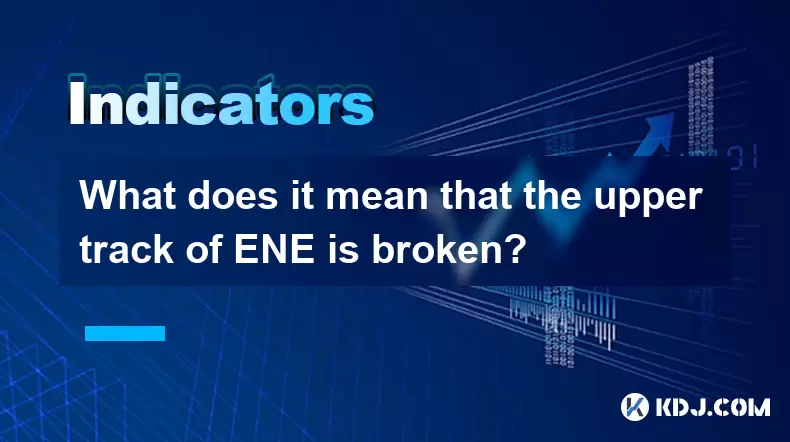
Understanding the ENE Indicator and Its Structure
The ENE (Envelope) indicator is a technical analysis tool used in cryptocurrency trading to identify potential overbought and oversold conditions. It consists of three lines: a middle moving average line, an upper band, and a lower band. These bands are typically set at a fixed percentage above and below the middle line, often ranging from 5% to 10%, depending on the trader’s settings. The upper track of the ENE is calculated by taking the simple moving average (SMA) of the closing prices over a defined period (commonly 25 periods) and adding a percentage deviation (e.g., 6%) to it.
When traders refer to the upper track being broken, they mean that the price of a cryptocurrency has moved above the upper band of the ENE indicator. This event is interpreted as a signal that the asset may be overbought. The ENE bands act as dynamic resistance and support levels. A break above the upper track suggests strong upward momentum, but it also raises concerns about a potential pullback or reversal due to short-term exhaustion in buying pressure.
Implications of Breaking the Upper ENE Track
A break above the upper ENE track does not automatically mean a reversal is imminent, but it signals that the market is moving with significant bullish force. In the context of cryptocurrency markets, which are highly volatile, such a breakout can occur rapidly during periods of high sentiment or news-driven rallies. The key implication is that the current price has exceeded the normal volatility range defined by the ENE settings.
Traders watch this event closely because it may indicate the beginning of a parabolic move or an overextended condition. If the price closes above the upper band and remains there for multiple periods, it could suggest a strong trend continuation. However, if the price quickly retreats back inside the envelope, it might indicate a false breakout or a temporary spike. The reliability of this signal increases when confirmed by volume and other indicators such as RSI (Relative Strength Index) or MACD (Moving Average Convergence Divergence).
How to Identify a Valid Upper Track Break
To determine whether a break of the upper ENE track is meaningful, traders should follow specific steps:
- Confirm the ENE settings: Ensure the indicator is configured correctly, such as using a 25-period SMA with a 6% deviation. These values can be adjusted based on the asset’s volatility.
- Check the price close: A valid break requires the closing price to be above the upper band, not just the intraday high. This avoids false signals from wicks or spikes.
- Observe the duration: If the price stays above the upper track for two or more consecutive candles, the breakout gains credibility.
- Analyze volume: A surge in trading volume during the breakout supports the validity of the move. Low volume may indicate a lack of conviction.
- Cross-verify with other indicators: Use RSI to check if the asset is overbought (above 70) or MACD to see if bullish momentum is accelerating.
These steps help distinguish between a sustainable breakout and a temporary price spike.
Trading Strategies After an Upper ENE Break
When the upper ENE track is broken, traders may adopt different strategies based on their risk tolerance and market context. Some traders view this as a trend continuation signal and enter long positions, expecting further upside. Others interpret it as a cautionary sign and prepare for a pullback.
For those entering long positions:
- Wait for a retest: After breaking above, the price may retest the upper band as new support. Entering on a successful retest can offer a favorable risk-reward ratio.
- Set trailing stop-loss: To protect profits, use a trailing stop below the rising ENE bands or recent swing lows.
- Combine with trend analysis: Ensure the broader trend on higher timeframes (e.g., 4-hour or daily) is bullish to align with the breakout.
For contrarian traders:
- Look for reversal patterns: Watch for bearish candlestick patterns like shooting stars or bearish engulfing formations near the upper band.
- Use overbought signals: If RSI is above 70 and starts turning down, it may confirm weakening momentum.
- Short near the upper band: Some traders place short entries with tight stop-loss above the recent high, targeting a return to the middle ENE line.
Common Misinterpretations and Pitfalls
Many traders misinterpret an upper ENE break as an immediate sell signal, which can lead to early exits during strong uptrends. In trending markets, especially in cryptocurrencies like Bitcoin or Ethereum, prices can remain above the upper band for extended periods. This is known as a ride-the-envelope scenario, where the upper band acts as dynamic support rather than resistance.
Another pitfall is using default ENE settings across all assets. High-volatility altcoins may require wider bands (e.g., 10%) to avoid frequent false breaks, while stablecoins or low-volatility tokens may need narrower deviations. Failing to adjust settings can result in over-trading or missed opportunities.
Additionally, relying solely on ENE without considering market context—such as upcoming events, exchange listings, or macroeconomic factors—can lead to poor decisions. For example, a breakout during a major crypto conference or ETF approval news may have stronger follow-through than one occurring in a low-liquidity period.
How to Adjust ENE Settings for Different Cryptocurrencies
Optimizing the ENE indicator involves tailoring its parameters to the specific behavior of each cryptocurrency. To adjust the settings:
- Access the indicator settings on your trading platform (e.g., TradingView, Binance, or MetaTrader).
- Modify the period length: For faster signals, reduce the SMA period to 10–14; for smoother lines, increase it to 30–50.
- Adjust the deviation percentage: For volatile coins like Dogecoin or Shiba Inu, use 8%–12%; for less volatile assets like BTC or ETH, 5%–7% may suffice.
- Backtest the changes: Apply the new settings on historical data to see how they would have performed.
- Monitor real-time performance: Observe how the adjusted bands react to price action over several trading sessions before relying on them.
These adjustments ensure the ENE remains a relevant tool across different market conditions and asset classes within the crypto space.
Frequently Asked Questions
Q: Can the upper ENE break be used as a standalone trading signal?
No, the upper ENE break should not be used alone. It is most effective when combined with volume analysis, candlestick patterns, and other technical indicators like RSI or MACD to confirm the strength and sustainability of the move.
Q: What timeframes are best for observing ENE upper track breaks?
The 1-hour, 4-hour, and daily timeframes are commonly used. Shorter timeframes like 5-minute or 15-minute may produce too many false signals due to market noise, especially in low-cap cryptocurrencies.
Q: Does a break above the upper ENE always lead to a price reversal?
No, a break above the upper ENE does not guarantee a reversal. In strong bullish trends, prices can continue rising while staying above the upper band, using it as dynamic support rather than resistance.
Q: How is the ENE different from Bollinger Bands?
The ENE uses a fixed percentage deviation from the moving average, while Bollinger Bands use standard deviations, making them adaptive to volatility. ENE bands remain equidistant from the middle line, whereas Bollinger Bands widen or narrow based on price volatility.
Disclaimer:info@kdj.com
The information provided is not trading advice. kdj.com does not assume any responsibility for any investments made based on the information provided in this article. Cryptocurrencies are highly volatile and it is highly recommended that you invest with caution after thorough research!
If you believe that the content used on this website infringes your copyright, please contact us immediately (info@kdj.com) and we will delete it promptly.
- Kiyosaki's Crypto Playbook: Ditching Paper for Real Assets Like Bitcoin
- 2025-07-25 22:30:11
- Satoshi-Era Whales Stir the Bitcoin Pot: What's the Deal?
- 2025-07-25 22:30:12
- Pi Coin Value in Indian Rupees (INR) 2024: Decoding the Hype
- 2025-07-25 21:45:50
- Crypto Investing: Top Picks and Meme Coin Mania in '25
- 2025-07-25 21:52:07
- Ark Invest's Portfolio Rebalance: Coinbase, Block, and the Crypto Shift
- 2025-07-25 21:52:07
- Bitcoin's Wild Ride: Sell-offs, Volatility, and What's Next
- 2025-07-25 21:55:18
Related knowledge

How to interpret that the KDJ D line is downward for a long time but the price is sideways?
Jul 25,2025 at 07:00pm
Understanding the KDJ Indicator and Its ComponentsThe KDJ indicator is a momentum oscillator widely used in cryptocurrency trading to assess overbough...

What does it mean that the KDJ indicator forms a double bottom at a low level?
Jul 25,2025 at 05:08pm
Understanding the KDJ Indicator in Cryptocurrency TradingThe KDJ indicator is a momentum oscillator widely used in cryptocurrency trading to identify ...
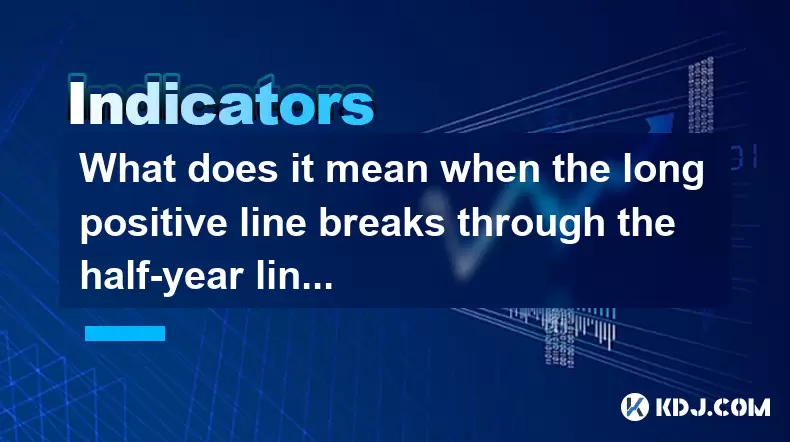
What does it mean when the long positive line breaks through the half-year line and then steps back?
Jul 25,2025 at 06:49pm
Understanding the Long Positive Line in Candlestick ChartsIn the world of cryptocurrency trading, candlestick patterns play a vital role in technical ...
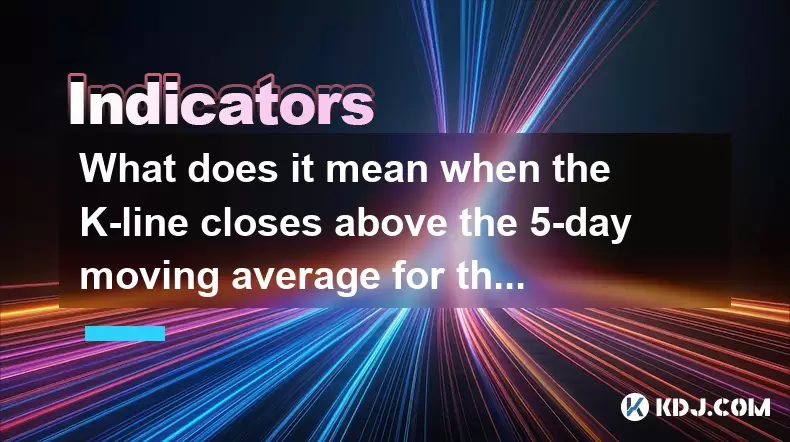
What does it mean when the K-line closes above the 5-day moving average for three consecutive days?
Jul 25,2025 at 10:07pm
Understanding the K-line and 5-day Moving AverageThe K-line, also known as a candlestick, is a critical charting tool used in technical analysis to re...
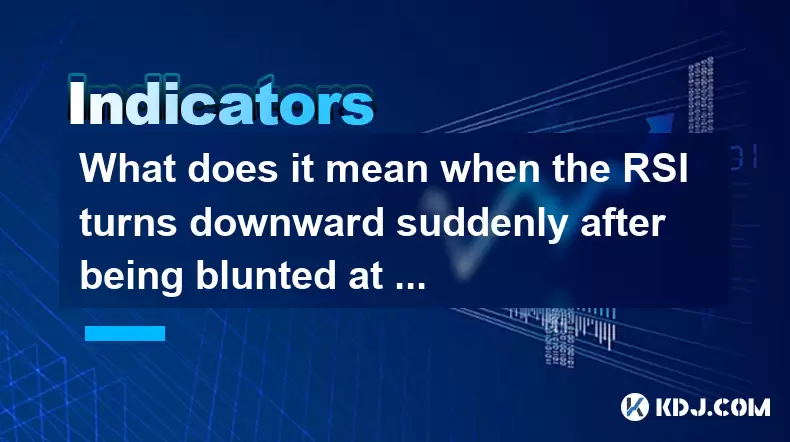
What does it mean when the RSI turns downward suddenly after being blunted at a high level?
Jul 25,2025 at 04:00pm
Understanding the RSI and Its Role in Technical AnalysisThe Relative Strength Index (RSI) is a momentum oscillator that measures the speed and change ...
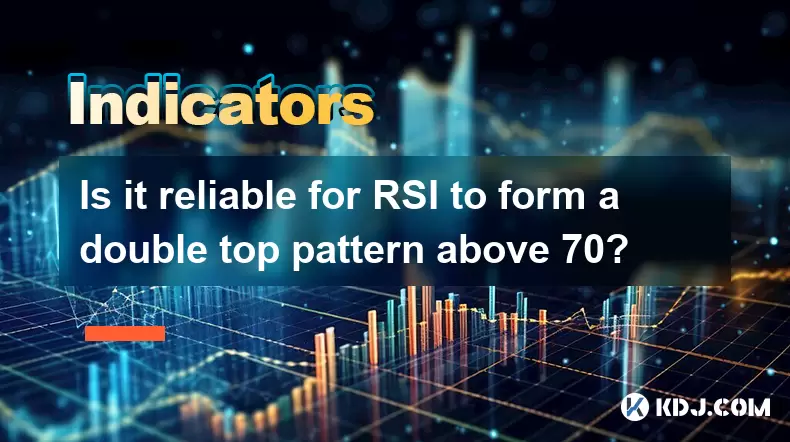
Is it reliable for RSI to form a double top pattern above 70?
Jul 25,2025 at 04:49pm
Understanding the RSI Indicator and Its Role in Technical AnalysisThe Relative Strength Index (RSI) is a momentum oscillator that measures the speed a...

How to interpret that the KDJ D line is downward for a long time but the price is sideways?
Jul 25,2025 at 07:00pm
Understanding the KDJ Indicator and Its ComponentsThe KDJ indicator is a momentum oscillator widely used in cryptocurrency trading to assess overbough...

What does it mean that the KDJ indicator forms a double bottom at a low level?
Jul 25,2025 at 05:08pm
Understanding the KDJ Indicator in Cryptocurrency TradingThe KDJ indicator is a momentum oscillator widely used in cryptocurrency trading to identify ...

What does it mean when the long positive line breaks through the half-year line and then steps back?
Jul 25,2025 at 06:49pm
Understanding the Long Positive Line in Candlestick ChartsIn the world of cryptocurrency trading, candlestick patterns play a vital role in technical ...

What does it mean when the K-line closes above the 5-day moving average for three consecutive days?
Jul 25,2025 at 10:07pm
Understanding the K-line and 5-day Moving AverageThe K-line, also known as a candlestick, is a critical charting tool used in technical analysis to re...

What does it mean when the RSI turns downward suddenly after being blunted at a high level?
Jul 25,2025 at 04:00pm
Understanding the RSI and Its Role in Technical AnalysisThe Relative Strength Index (RSI) is a momentum oscillator that measures the speed and change ...

Is it reliable for RSI to form a double top pattern above 70?
Jul 25,2025 at 04:49pm
Understanding the RSI Indicator and Its Role in Technical AnalysisThe Relative Strength Index (RSI) is a momentum oscillator that measures the speed a...
See all articles

























































































